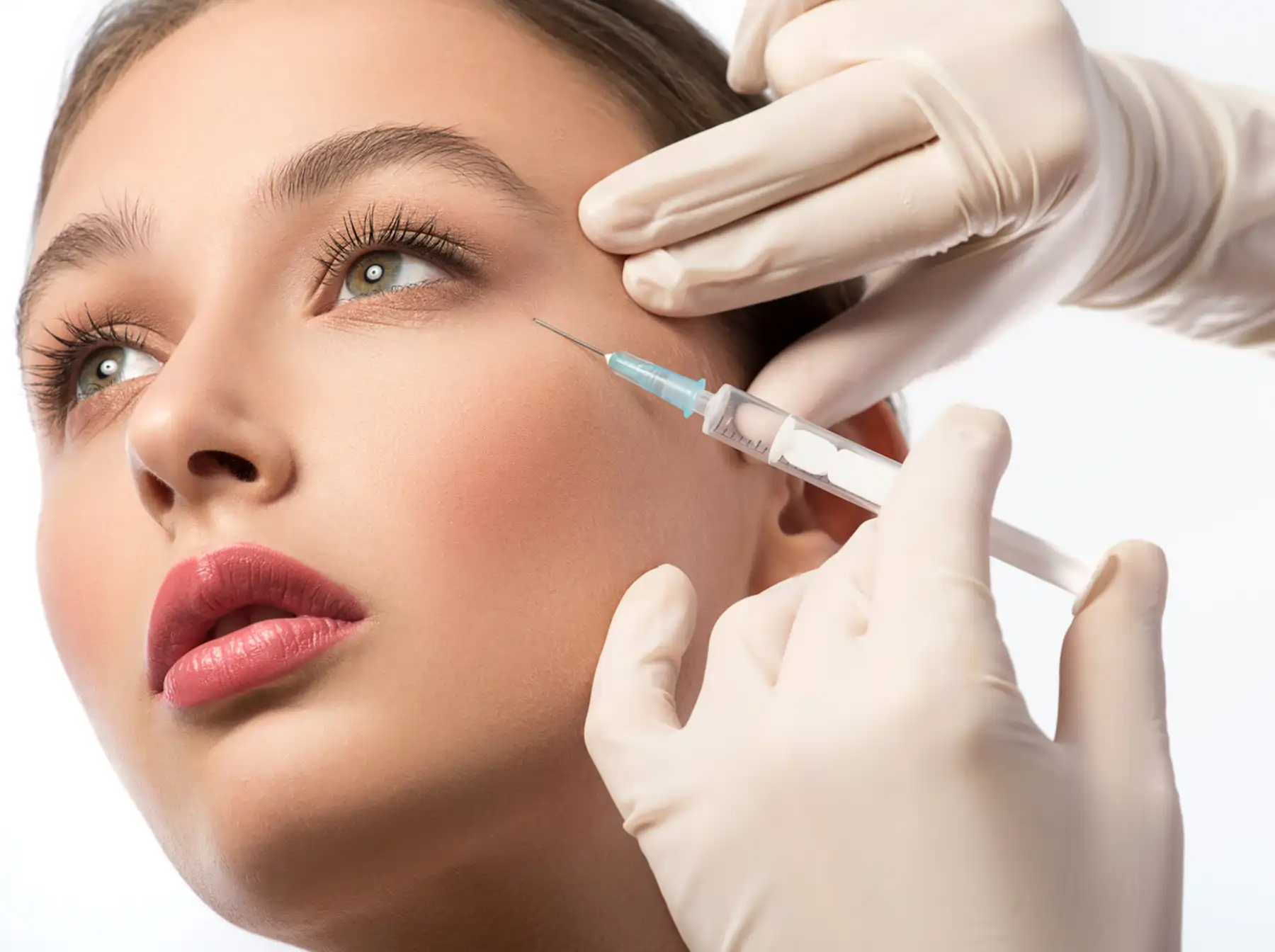Fillers

Fillers
Dermal Fillers:
Dermal fillers are injectable treatments used to restore lost volume, smooth wrinkles, and enhance facial features. Unlike Botox which targets dynamic wrinkles, fillers physically add volume beneath the skin for rejuvenation.
What Are Dermal Fillers?
They are gel-like substances injected under the skin. Fillers replace lost collagen, elastin, and hyaluronic acid, which decline with age, causing sagging and deep lines.
Types of Fillers
| Type | Composition | Best Use Areas | Duration | Reversibility |
|---|---|---|---|---|
| Hyaluronic Acid (HA) | Natural sugar in the skin | Lips, cheeks, under eyes | 6–18 months | Yes (Hyaluronidase) |
| Calcium Hydroxylapatite (CaHA) | Bone-derived compound | Folds, jowls, hands | 12–18 months | No |
| Poly-L-lactic Acid (PLLA) | Synthetic polymer | Deep wrinkles, volume loss | 1–2 years | No |
| Polymethylmethacrylate (PMMA) | Semi-permanent microspheres | Deep lines, acne scars | 2–5 years | No |
| Autologous Fat | Patient's own fat | Cheeks, temples | Variable | No |
What's Included
Common Treatment Areas
- Lips – volume and symmetry
- Cheeks – lift and contour
- Under-eye hollows – refresh tired look
- Nasolabial folds – soften deep lines
- Jawline & Chin – define shape
- Hands – restore volume loss
Procedure Steps
- Consultation and facial analysis
- Photography & informed consent
- Numbing and preparation
- Injection using needle or cannula
- Massage and aftercare instructions
Results & Maintenance
-
Results are visible immediately for HA fillers and gradually for collagen-stimulating types. Maintenance every 6–18 months is typical.
Benefits of Fillers
- Minimally invasive with quick recovery
- Natural-looking enhancements
- Customizable treatments
- Reversible in most HA cases
Risks and Complications
- Mild: Swelling, redness, bruising
- Moderate: Lumps, asymmetry
- Severe (rare): Vascular occlusion, infection, vision issues
Dermatologist's Insight:
-
“The goal of filler treatment is not to change how you look, but to help you look like the best version of yourself.”
Who Should Avoid Fillers?
- Pregnant or breastfeeding women
- People with active skin infections
- Severe allergies to filler components
- Uncontrolled diabetes or bleeding disorders
Trends in Aesthetic Fillers
- Microfillers & skin boosters for glow
- Prejuvenation in younger patients
- Use of cannulas for safer injections
- Combination therapy with PRP or lasers
Medicine Use Disclaimer: Do not self-prescribe or start any medication or topical treatment without consulting a qualified doctor. Improper use can lead to side effects, resistance, or complications. Always follow professional medical advice.
